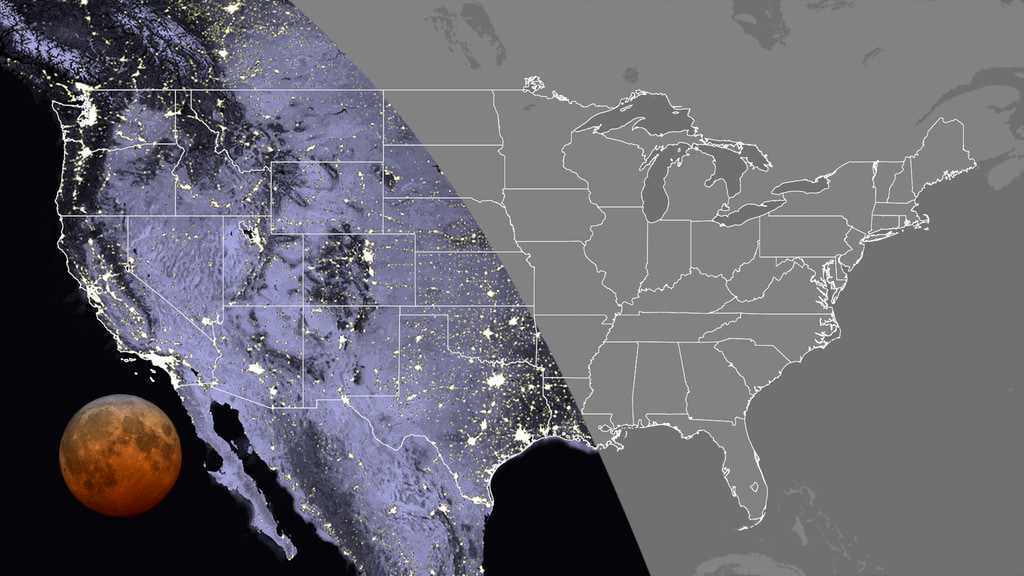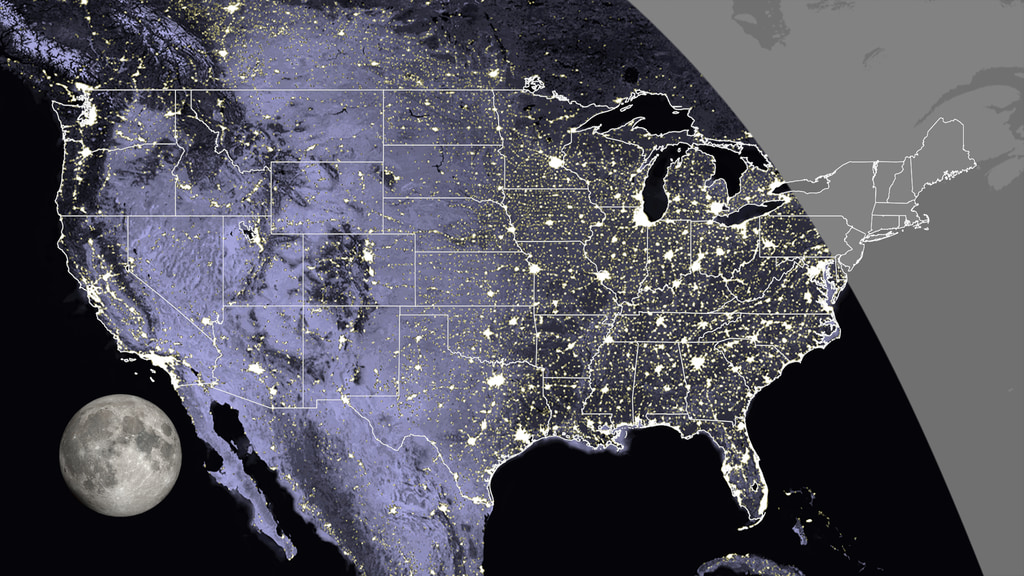How to Watch and Photograph the Super Blood Moon
Special Stories
25 May 2021 4:00 AM
Set your alarms now for the morning hours of Wednesday, May 26th! Not only will most of the Western and Central United States be treated to a total eclipse, but the full moon will also be the largest of the year. Therefore, we have a supermoon total eclipse on our hands, also known as a Super Blood Moon!
We have two amazing phenomena happening at once for this lunar event.
First, the supermoon. As the moon travels around the earth in its elliptical orbit, it gets closer and farther away from the planet. When the moon is full while near its closest point to the earth, it appears larger and brighter than a normal full moon and is called a "supermoon." This Wednesday's supermoon will be the biggest and brightest of the year!
Our second amazing phenomena? A total lunar eclipse.
[embed]https://moon.nasa.gov/system/video_items/99_supermoon2_720p30.mp4[/embed]
As the NASA animated above illustrates, a total lunar eclipse occurs when the moon passes through Earth's inner shadow, known as the umbra, and is completely shaded from the Sun's rays. Since the moon is only illuminated by light bending through the Earth's atmosphere and is scattered to the far end of the visible spectrum, the moon appears in a reddish hue, hence the term "blood moon."
 Credit: NASA’s Scientific Visualization Studio.
There is some bad news for folks on the East Coast of North America, as well as in the Great Lakes. While you'll be able to catch the supermoon in all its glory, the total eclipse will occur after the moon has set. The NASA image above shows who will be be able to view totality, starting near the Mississippi River to the south, and the Eastern Montana border to the north. All of the West Coast will be able to view the total lunar eclipse, but you'll have to wake up early!
Credit: NASA’s Scientific Visualization Studio.
There is some bad news for folks on the East Coast of North America, as well as in the Great Lakes. While you'll be able to catch the supermoon in all its glory, the total eclipse will occur after the moon has set. The NASA image above shows who will be be able to view totality, starting near the Mississippi River to the south, and the Eastern Montana border to the north. All of the West Coast will be able to view the total lunar eclipse, but you'll have to wake up early!
 If you live in the Great Lakes or the Southeast, you'll still be able to see the eclipse begin, even though you'll miss out on totality. If you're in the clear section of the above image (credit: NASA), a partial lunar eclipse will be able to be observed.
If you live in the Great Lakes or the Southeast, you'll still be able to see the eclipse begin, even though you'll miss out on totality. If you're in the clear section of the above image (credit: NASA), a partial lunar eclipse will be able to be observed.
 Image credit: NASA/Bill Ingalls
If you want to take a series of images showing the stages of the eclipse, it will take additional planning and more time.
Leave your zoom wide and set your ISO to a moderate level to start. Take a photograph at even intervals (every 5 minutes for example), leaving your camera in the same position, and change only the shutter speed as needed to continue to see the moon as it gets darker and brighter again.
For additional tips and techniques, check out this Nikon article.
Image credit: NASA/Bill Ingalls
If you want to take a series of images showing the stages of the eclipse, it will take additional planning and more time.
Leave your zoom wide and set your ISO to a moderate level to start. Take a photograph at even intervals (every 5 minutes for example), leaving your camera in the same position, and change only the shutter speed as needed to continue to see the moon as it gets darker and brighter again.
For additional tips and techniques, check out this Nikon article.
Who Can View Totality
 Credit: NASA’s Scientific Visualization Studio.
There is some bad news for folks on the East Coast of North America, as well as in the Great Lakes. While you'll be able to catch the supermoon in all its glory, the total eclipse will occur after the moon has set. The NASA image above shows who will be be able to view totality, starting near the Mississippi River to the south, and the Eastern Montana border to the north. All of the West Coast will be able to view the total lunar eclipse, but you'll have to wake up early!
Credit: NASA’s Scientific Visualization Studio.
There is some bad news for folks on the East Coast of North America, as well as in the Great Lakes. While you'll be able to catch the supermoon in all its glory, the total eclipse will occur after the moon has set. The NASA image above shows who will be be able to view totality, starting near the Mississippi River to the south, and the Eastern Montana border to the north. All of the West Coast will be able to view the total lunar eclipse, but you'll have to wake up early!
 If you live in the Great Lakes or the Southeast, you'll still be able to see the eclipse begin, even though you'll miss out on totality. If you're in the clear section of the above image (credit: NASA), a partial lunar eclipse will be able to be observed.
If you live in the Great Lakes or the Southeast, you'll still be able to see the eclipse begin, even though you'll miss out on totality. If you're in the clear section of the above image (credit: NASA), a partial lunar eclipse will be able to be observed.
When to Watch
[embed]https://moon.nasa.gov/system/video_items/98_eclipse_202105_fancy_720p30_%281%29.mp4[/embed] The animation above (courtesy of NASA) illustrates when the moon will be covered by Earth's shadow during the morning hours on Wednesday the 26th. The time given is in UTC, or Coordinated Universal Time, so you'll have to subtract 4 hours for the Eastern Time conversion, or 7 hours for Pacific Time. The partial lunar eclipse will begin around 9:45 UTC, which is 5:45 EDT. The total lunar eclipse will be brief, lasting only about 15 minutes. Totality begins around 11:11 UTC, 7:11 EDT and 4:11 PDT. It lasts until 7:26 EDT/4:26 PDT. The partial eclipse will come to an end at 12:52 UTC, 5:52 PDT.How to Photograph
Photographing the moon is normally a quick shutter speed affair, due to its brightness and surrounding darkness. However, when the moon is red from totality, the lens will have to be open for a longer period, which means a tripod is your best friend. If you just want one awesome shot of the moon in its red dress, zoom in as much as you want, ISO at a moderate level should work well (400-800), and leave the lens open for a few seconds. You can play with shutter speed to change the brightness, but try to not take the ISO much higher so you don't have noise in your photograph. If you have a night mode on your digital camera or smart phone, use it! Image credit: NASA/Bill Ingalls
If you want to take a series of images showing the stages of the eclipse, it will take additional planning and more time.
Leave your zoom wide and set your ISO to a moderate level to start. Take a photograph at even intervals (every 5 minutes for example), leaving your camera in the same position, and change only the shutter speed as needed to continue to see the moon as it gets darker and brighter again.
For additional tips and techniques, check out this Nikon article.
Image credit: NASA/Bill Ingalls
If you want to take a series of images showing the stages of the eclipse, it will take additional planning and more time.
Leave your zoom wide and set your ISO to a moderate level to start. Take a photograph at even intervals (every 5 minutes for example), leaving your camera in the same position, and change only the shutter speed as needed to continue to see the moon as it gets darker and brighter again.
For additional tips and techniques, check out this Nikon article.All Weather News
More